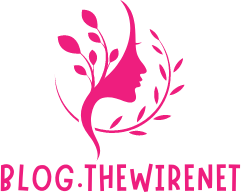Introduction to Blogging
Welcome to the exciting world of blogging, where words have the power to captivate and inspire audiences around the globe. Crafting the perfect article is an art form that requires creativity, strategy, and a deep understanding of your readers. Whether you’re a seasoned blogger looking to enhance your skills or a newcomer eager to make your mark, this step-by-step guide will help you master the art of blogging and create content that resonates with your audience. So grab your pen (or keyboard) and let’s dive into the wonderful journey of crafting the perfect blog post!
Understanding Your Audience
Understanding Your Audience is a crucial step in creating captivating blog content. Before putting pen to paper, or fingers to keyboard, it’s essential to have a clear picture of who you are writing for. Consider their demographics, interests, and pain points. By knowing your audience inside and out, you can tailor your content to resonate with them on a deeper level.
Take the time to conduct market research and gather insights into what makes your target audience tick. Analyze data from analytics tools, social media platforms, and surveys to gain valuable information about their preferences and behaviors.
Once you have a solid understanding of your audience’s needs and desires, you can craft content that speaks directly to them. Use language that resonates with their emotions and provides solutions to their problems. By establishing a connection with your readers through relatable content, you can build trust and loyalty over time.
Keep in mind that audience preferences may evolve over time, so it’s important to continually monitor trends and engage with your readers through comments and feedback channels. Stay adaptable in your approach while staying true to your brand voice and values.
Choosing a Topic and Creating a Catchy Title
When it comes to crafting the perfect blog post, choosing a captivating topic and creating an attention-grabbing title are paramount. Your topic should resonate with your audience’s interests and needs. Think about what they would find valuable or entertaining. Consider current trends, common questions, or unique perspectives that can set your content apart.
Once you have a compelling topic in mind, it’s time to brainstorm a catchy title that will entice readers to click and engage with your article. A good title is concise yet descriptive, sparking curiosity while clearly conveying what the post is about. Use strong language, intriguing questions, or a hint of mystery to draw readers in from the start.
Remember that your title sets the tone for the entire piece and plays a crucial role in attracting organic traffic through search engines and social media shares. Take the time to refine your topic and title until they encapsulate the essence of your content effectively.
Researching and Outlining your Article
Researching and outlining your article is a crucial step in the blogging process. It sets the foundation for a well-structured and informative piece that will captivate your readers.
Start by diving deep into your chosen topic, exploring different perspectives, and gathering relevant information from reliable sources. This will help you provide valuable insights and unique angles to keep your audience engaged.
Once you have gathered all the necessary data, it’s time to outline your article. Organize your thoughts logically, create a flow that makes sense, and ensure a smooth transition between sections.
A clear outline not only helps you stay focused while writing but also ensures that your content is coherent and easy to follow for your readers. So take the time to research thoroughly and map out a solid plan before diving into the writing process.
Writing the Perfect Introduction
Crafting the perfect introduction is crucial in capturing your readers’ attention right from the start. It sets the tone for the rest of your article, enticing them to continue reading.
Start with a hook that intrigues your audience, whether it’s a thought-provoking question, an interesting fact, or a compelling story. This initial spark will draw them in and make them want to explore further.
Clearly outline what your article will cover and why it’s relevant to your readers. By setting clear expectations upfront, you establish trust and demonstrate the value they will gain from reading on.
Keep it concise and engaging – avoid long-winded explanations or unnecessary details. A punchy introduction that gets straight to the point is more likely to hold their interest and encourage them to delve deeper into your content.
Remember, first impressions matter! Take the time to polish your introduction until it shines brightly, leaving a lasting impact on anyone who stumbles upon your blog post.
Developing Your Main Points
Once you have a solid outline in place, it’s time to delve into developing your main points. Each point should be clear, concise, and relevant to your topic. Start by expanding on each key idea with supporting details or examples that will captivate your readers’ interest.
Make sure to maintain a logical flow between your main points so that the reader can easily follow along. Consider using transitional phrases to smoothly guide them from one idea to the next without causing confusion.
Remember, quality over quantity is essential when developing your main points. It’s better to thoroughly explore a few significant ideas rather than skimming the surface of multiple topics. This approach will allow you to provide depth and insight that resonates with your audience.
Additionally, don’t forget to tie everything back to your overarching theme or message throughout the article. Consistency in reinforcing these key points will help solidify your argument and leave a lasting impact on those who engage with your content.
Crafting Engaging Content
Crafting engaging content is the key to capturing and retaining your audience’s attention. To create content that resonates with your readers, it’s essential to understand their interests, preferences, and pain points. By tailoring your message to meet their needs, you can establish a connection that keeps them coming back for more.
One effective way to make your content engaging is by telling a compelling story. People are naturally drawn to narratives that evoke emotion and spark curiosity. Use storytelling techniques to captivate your audience from the very beginning and keep them hooked throughout the article.
Another strategy for crafting engaging content is to add value through insightful information or practical tips. Offer unique perspectives, actionable advice, or in-depth analysis that provides genuine value to your readers. This will not only keep them engaged but also position you as an authoritative voice in your niche.
Don’t be afraid to inject personality into your writing. Showcasing authenticity and relatability can help humanize your content and make it more appealing to audiences. Whether it’s through humor, personal anecdotes, or conversational language, infusing personality into your writing can set you apart from the competition and foster stronger connections with readers.
Adding Visuals for Impact
Visuals play a crucial role in capturing the attention of your audience and enhancing the overall impact of your blog post. Including images, infographics, videos, or charts can make your content more engaging and memorable.
When selecting visuals for your article, make sure they are relevant to your topic and help convey your message effectively. High-quality visuals not only break up long blocks of text but also provide visual cues that guide readers through the content.
Opt for visually appealing graphics that complement your writing style and tone. Remember, a picture is worth a thousand words – choose visuals that resonate with your audience and evoke emotions or curiosity.
Strive for a good balance between text and visuals to maintain reader interest. Visual elements should enhance the reading experience without overshadowing the written content.
Incorporating diverse types of visuals can cater to different learning styles among your readers. Experiment with various formats to see what resonates best with your audience and keeps them engaged throughout the entire article.
Editing and Proofreading
Editing and proofreading are crucial steps in the blogging process. Once you’ve written your article, it’s time to polish it up and ensure it’s error-free. Start by reviewing your content for spelling and grammar mistakes. It’s easy for typos to slip through, so a thorough edit is essential.
Next, focus on the structure and flow of your writing. Make sure each paragraph transitions smoothly into the next, keeping your readers engaged from start to finish. Check for consistency in tone and style throughout the piece.
Don’t forget to fact-check any information you’ve included in your article. Accuracy is key when building credibility with your audience. Additionally, keep an eye out for any repetitive words or phrases that can be replaced with synonyms or rephrased for clarity.
Take breaks between editing sessions to give yourself fresh eyes on the content. Consider reading aloud or having someone else review your work for additional feedback. Remember, editing is where your article truly shines!
Optimizing for SEO
Optimizing for SEO is a crucial step in ensuring your blog article reaches its full potential. When it comes to search engine optimization, there are several key factors to consider. Incorporating relevant keywords throughout your content is essential for improving your search engine rankings. Conduct thorough keyword research to identify the terms and phrases that your target audience is searching for.
In addition to keywords, optimizing meta tags and descriptions can also boost your visibility on search engines. These elements provide a brief summary of what your article is about, making it easier for both users and search engines to understand the content of the page.
Another important aspect of SEO optimization is creating high-quality backlinks from reputable websites. Backlinks serve as endorsements from other sites, signaling to search engines that your content is trustworthy and authoritative.
Furthermore, optimizing loading speed and mobile responsiveness can enhance user experience, leading to higher engagement rates and improved rankings on search engine results pages (SERPs). By implementing these strategies effectively, you can significantly increase organic traffic to your blog and attract more readers interested in your content.
Promoting Your Article
Congratulations! You have successfully crafted a well-written and engaging blog post. Now, it’s time to promote your work and get it in front of your target audience. Utilize social media platforms, email newsletters, guest posting opportunities, and collaborations with other bloggers to increase the visibility of your article.
Remember to engage with your readers through comments and feedback, share your post across different channels regularly, and consider repurposing your content into different formats such as videos or infographics.
By following these steps and mastering the art of blogging, you can create impactful content that resonates with your audience and drives traffic to your website. Keep honing your skills, experimenting with new techniques, and staying true to your unique voice as a writer. Happy blogging!
























